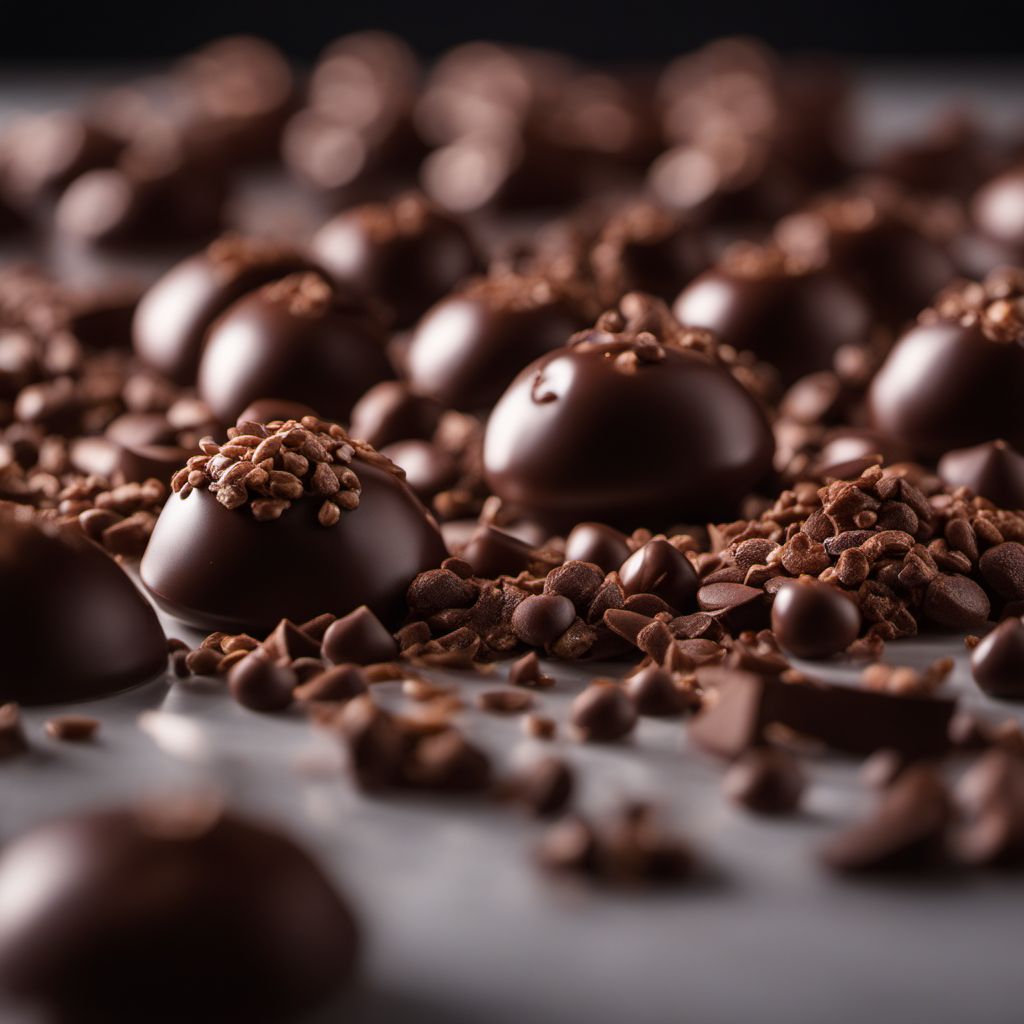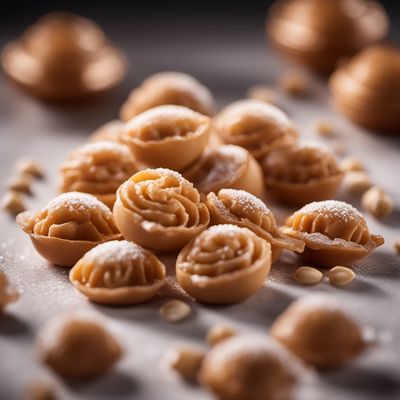
Ingredient
Chocolate coated confectionery
Decadent Delights: Chocolate Coated Confectionery
Chocolate coated confectionery typically consists of bite-sized pieces of various fillings, such as dried fruits, nuts, or pretzels, that are coated in a layer of chocolate. The chocolate coating can be dark, milk, or white chocolate, each offering its own distinct flavor and sweetness. The appearance of chocolate coated confectionery varies depending on the filling, but they are generally small, round or irregular-shaped treats with a glossy chocolate exterior.
Origins and history
The history of chocolate dates back to ancient Mesoamerica, where it was consumed as a bitter beverage by the Mayans and Aztecs. The addition of sugar and other ingredients transformed chocolate into the sweet treat we know today. The concept of coating confectionery with chocolate emerged in the 19th century, and it quickly gained popularity as a luxurious indulgence. Since then, chocolate coated confectionery has become a beloved treat enjoyed worldwide.
Nutritional information
The nutritional information of chocolate coated confectionery varies depending on the type of filling and chocolate used. Generally, they are high in calories, sugar, and fat. However, they can also provide small amounts of nutrients depending on the filling, such as fiber from dried fruits or protein from nuts. It's important to consume them in moderation as part of a balanced diet.
Allergens
Chocolate coated confectionery may contain allergens such as nuts, dairy, or gluten, depending on the filling and chocolate used. It's crucial to read the labels carefully for any potential allergen warnings and to consider individual dietary restrictions or allergies.
How to select
When selecting chocolate coated confectionery, look for products that use high-quality chocolate and fresh, flavorful fillings. Opt for options that are free from artificial additives or preservatives. Consider the type of filling you prefer, whether it's dried fruits, nuts, or other confectionery, and choose accordingly. Additionally, check the packaging for any signs of damage or tampering.
Storage recommendations
To maintain the freshness and quality of chocolate coated confectionery, store them in a cool, dry place, away from direct sunlight and strong odors. It's best to keep them in an airtight container or resealable bag to prevent moisture absorption and maintain their texture. Properly stored, they can last for several weeks to months, depending on the filling and chocolate used.
How to produce
Chocolate coated confectionery is typically produced by confectionery manufacturers using specialized equipment and techniques. However, amateur confectioners can experiment with coating their preferred fillings in melted chocolate at home. It requires melting the chocolate, dipping the fillings, and allowing them to set before enjoying the homemade treats.
Preparation tips
Chocolate coated confectionery can be enjoyed as a standalone treat or used as a versatile ingredient in various desserts. They can be added to ice cream, cakes, or cookies for an extra burst of flavor and texture. They can also be used as a topping for desserts or incorporated into homemade trail mixes or granola bars. The possibilities are endless when it comes to incorporating these indulgent treats into your culinary creations.
Culinary uses
Chocolate coated confectionery is commonly used as a standalone treat or as an ingredient in desserts and confectionery. They are often found in chocolate assortments, gift boxes, or sold individually in specialty stores, supermarkets, and online retailers. They are popular during festive seasons or as gifts for special occasions.
Availability
Chocolate coated confectionery is available worldwide, with various brands and flavors catering to different regions and preferences. They are commonly found in North America, Europe, Asia, and other parts of the world.



